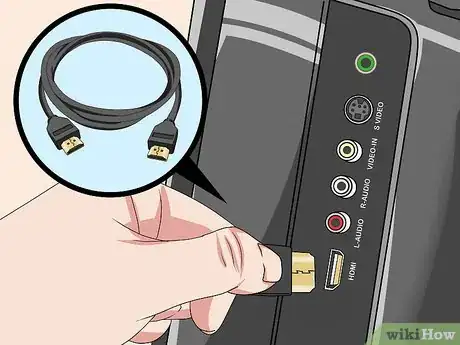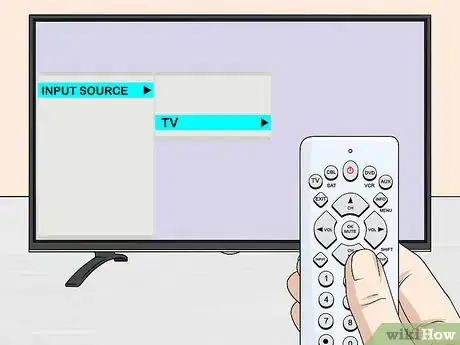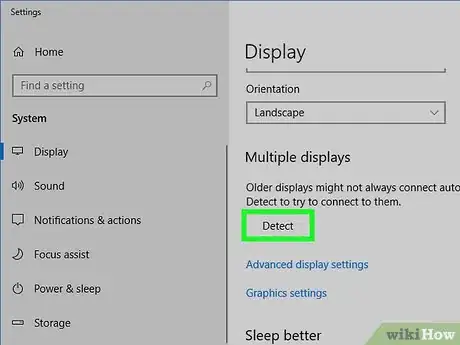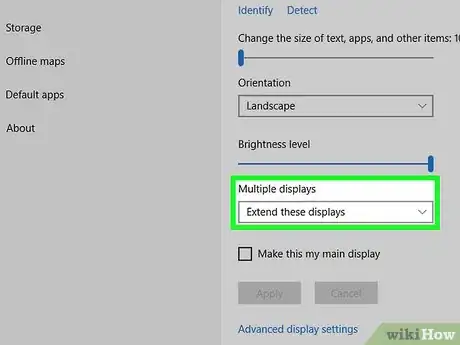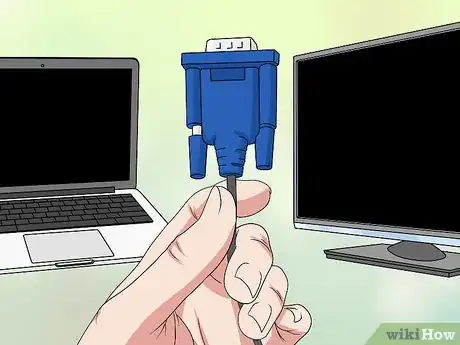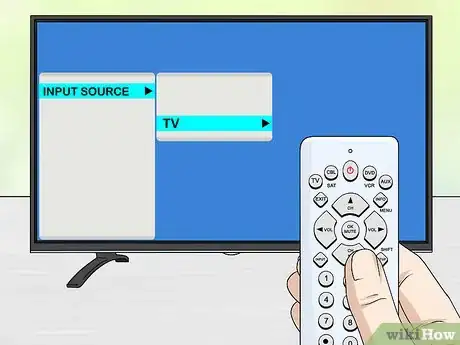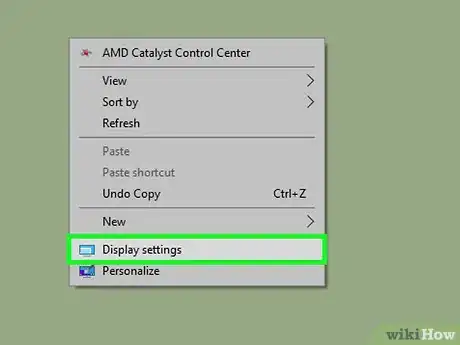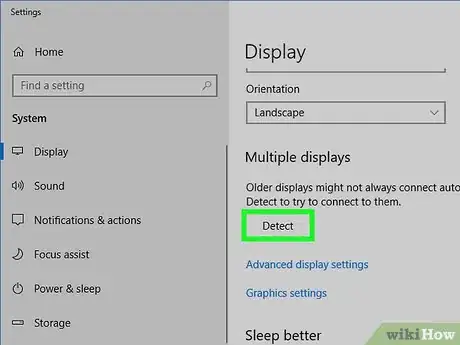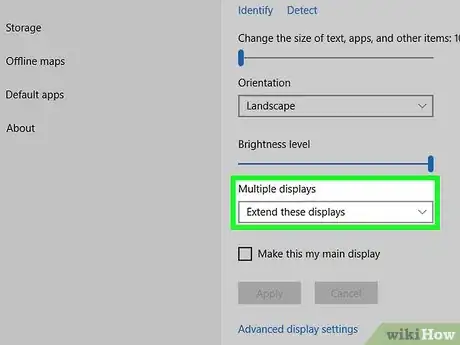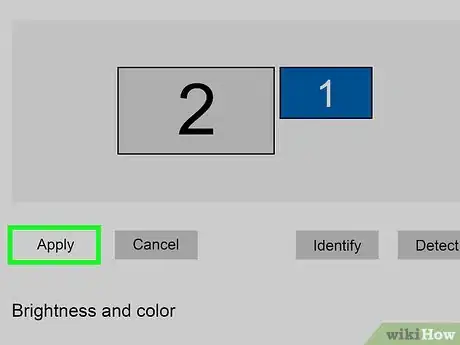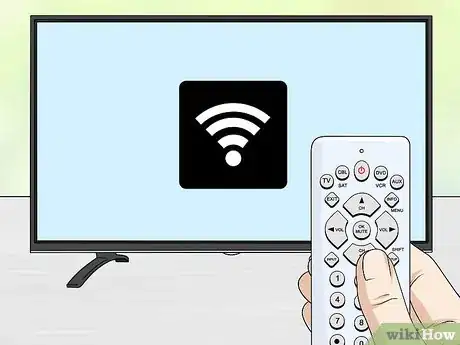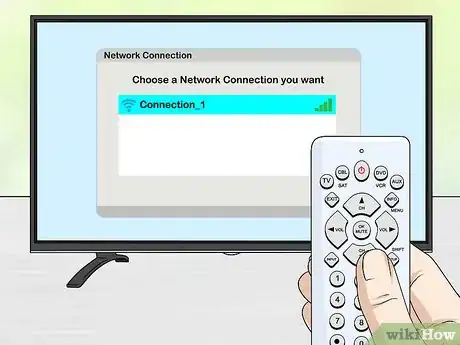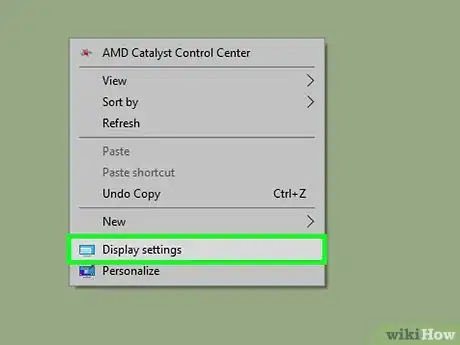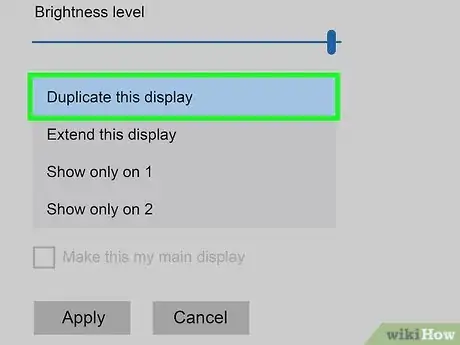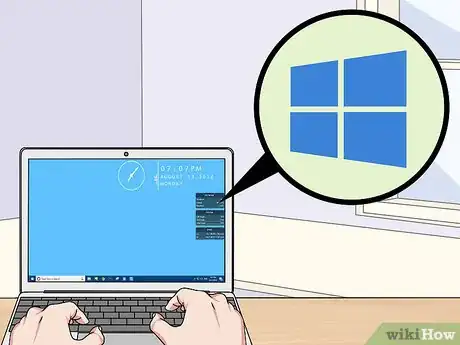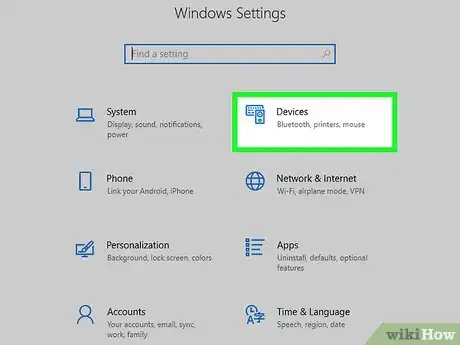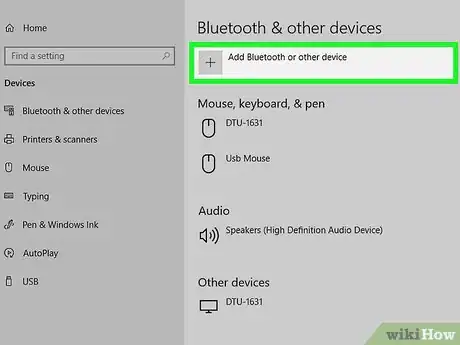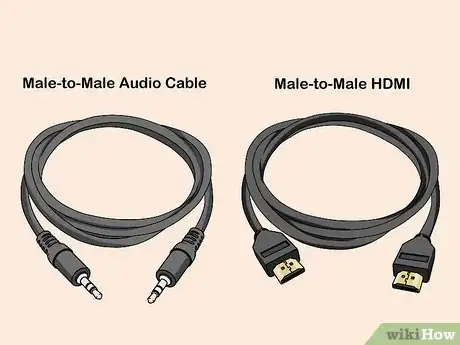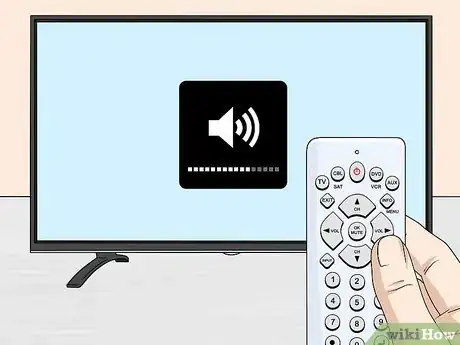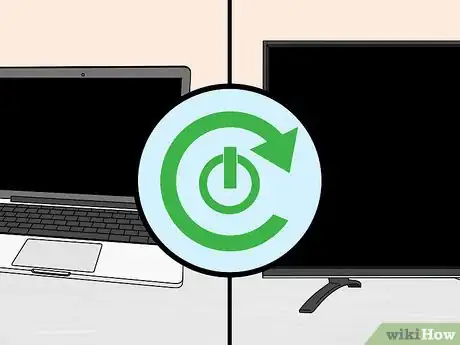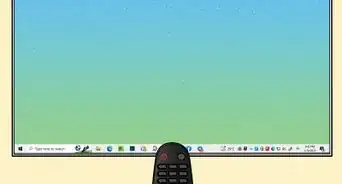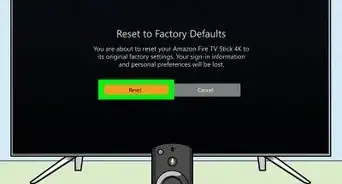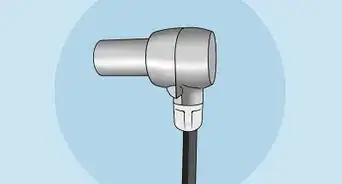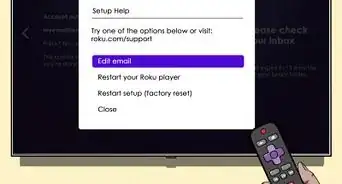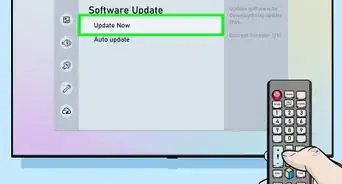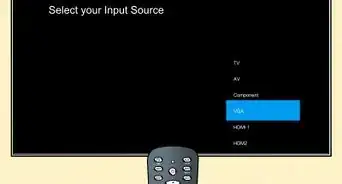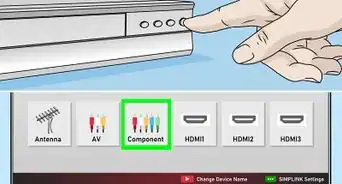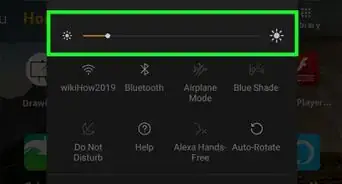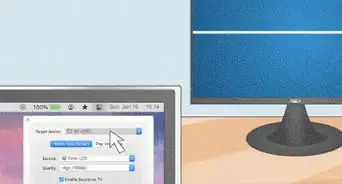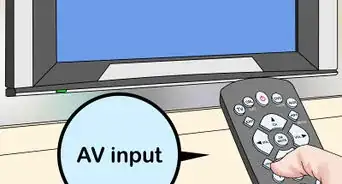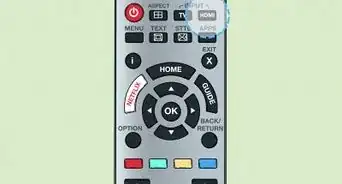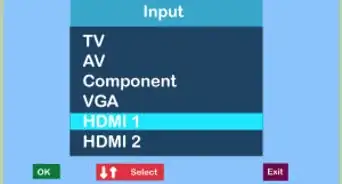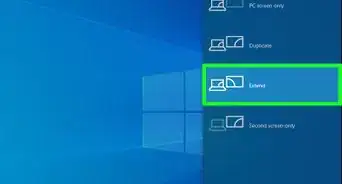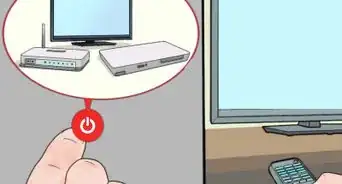This article was co-authored by Luigi Oppido. Luigi Oppido is the Owner and Operator of Pleasure Point Computers in Santa Cruz, California. Luigi has over 25 years of experience in general computer repair, data recovery, virus removal, and upgrades. He is also the host of the Computer Man Show! broadcasted on KSQD covering central California for over two years.
The wikiHow Tech Team also followed the article's instructions and verified that they work.
This article has been viewed 2,269,243 times.
Did you know that you can display video and play audio from your computer on your TV? It's actually pretty easy, especially now that so many TVs are "smart." This wikiHow article will teach you the easiest ways to connect your Windows PC to a TV, including using an HDMI cable, a DVI or VGA cable, or by wirelessly streaming to a smart TV or streaming device.
Steps
Using HDMI
-
1Connect your PC to your TV with a male-to-male HDMI cable. The HDMI port on the computer and the HDMI port on the TV will be exactly the same and the HDMI cable should have the same connector on both ends.[1]
- If the TV has more than one HDMI port, make note of the port number you plug it into.
-
2Change the input of the TV. Using the buttons on the TV or using the TV remote, press the Input button to change the input of the TV to HDMI.
- If your TV has multiple HDMI ports, choose the port that is connected to the computer.
- Some TVs may do this automatically when they detect a signal.
Advertisement -
3Right-click on the desktop and select Display Settings. This will open the display settings menu.
-
4Click Detect. This tells the computer to look for the TV you connected. Look to see if there are two squares, labeled 1 and 2, in the display settings window.
- Your computer may have already detected your TV.
-
5Click Identify. This will show a label on each screen so you will know which number has been assigned to your computer monitor, and what number has been assigned to your TV ("1" being the main display and "2" being the secondary display).
-
6Click the "Multiple displays" drop-down box and select an option. This will give you a few options for how you want to show your computer on your TV. The options are:
- Duplicate these displays. This will mirror exactly what is on your computer screen on the TV.
- Extend these displays. This will make your TV an extended part of your desktop.
- Show only on 1. This will turn off display number 2.
- Show only on 2. This will turn off display number 1.
-
7Click Apply. This will change the display settings and apply them to your computer monitor and TV. Your TV should now be connected to your computer.
- You can further customize each display by clicking on its numbered square and then selecting Advanced display settings. You can also drag and rearrange the squares to change the orientation of the two displays.
Using DVI or VGA
-
1Connect your computer to the TV with a male-to-male DVI or VGA or cable. Both the DVI and VGA port on the computer and the TV should be exactly the same and the cable should have the same connector on both ends.
- On some TV's the VGA input is labeled "PC IN" or "Computer IN".
-
2Connect your computer to the TV with a male-to-male audio cable. This is a 3.5mm stereo audio cable, similar to the end of a headphone plug. Plug one end of the cable into the headphone jack on your computer, which is typically a green port. Then plug the other end into the audio-in port on the TV.
- The audio-in port on the TV should be located near the DVI or VGA port you connected earlier.
-
3Change the input of the TV. Using the buttons on the TV or using the TV remote, press the Input button to change the input of the TV to DVI or VGA.
- On some TVs this input is labeled "PC" or "Computer".
- Some TVs may do this automatically when they detect a signal.
-
4Right-click on the desktop and select Display Settings. This will open the display settings menu.
-
5Click Detect. This tells the computer to look for the TV you connected. Look to see if there are two squares, labeled 1 and 2, in the display settings window.
- Your computer may have already detected your TV.
-
6Click Identify. This will show a label on each screen so you will know which number has been assigned to your computer monitor, and what number has been assigned to your TV.
-
7Click the "Multiple displays" drop-down box and select a display option. This will give you a few options for how you want to show your computer on your TV. The options are:
- Duplicate these displays. This will mirror exactly what is on your computer screen on the TV.
- Extend these displays. This will make your TV an extended part of your desktop.
- Show only on 1. This will turn off display number 2.
- Show only on 2. This will turn off display number 1.
-
8Click Apply. This will change the display settings and apply them to your computer monitor and TV. Your TV should now be connected to your computer.
- You can further customize each display by clicking on its numbered square and then selecting Advanced display settings. You can also drag and rearrange the squares to change the orientation of the two displays.
Using Wi-Fi
-
1Enable Wi-Fi mode on the TV. Follow the manufacturer's instructions to do so, access the Miracast protocol settings to configure your TV's Wi-Fi connection.[2]
- Not all TVs with Wi-Fi support this feature. Check the owner's manual of your TV before continuing.
-
2
-
3Right-click on the desktop and click Display settings.
-
4Click the "Multiple displays" drop-down box and select Duplicate this display.
-
5Click Apply.
-
6
-
7Click Devices then click Connected Devices.
-
8Click Add a device. Windows will begin searching for connected devices on the network.[4]
-
9Select your TV when it appears. Windows will automatically connect to your TV.[5]
Troubleshooting
-
1Make sure you have the right cables or adapters. Sometimes cables can have the right connections but aren't made for the purpose of carrying audio or video signals. Make sure the cable is rated for audio/visual use.
- Most computers don't send audio output through the DVI port, so a DVI to HDMI adapter won't carry any audio in most cases. If so, you'll need to hook up a separate audio cable.
-
2Make sure all the cables are connected properly. Check that all the cables are plugged in properly to the ports and not loose. If the cable has thumb screws, like most DVI and VGA cables, make sure the screws are screwed in and snug.
-
3Check the volume. Check that the volume is up on both the computer and TV and make sure neither is on mute.
-
4Change the audio output. If you're not getting sound, make sure you have the right audio output selected.
- Right-click on .
- Click Playback devices.
- Select the correct audio output (HDMI output for HDMI, or Headphones if you're using an audio cable)
- If you don't see the right output, right-click on any of the listed devices and make sure Show Disabled Devices and Show Disconnected Devices are both selected. This will tell you if the audio is disconnected or disabled.
-
5Restart the computer and the TV. When all else fails, restarting the computer and the TV can help the computer to detect that a new display is connected.
-
6Check your computer's display calibration. Sometimes, an error message will pop up saying "HDMI not supported", which usually pops up when your TV and PC have different display settings for resolution.
Expert Q&A
-
QuestionHow do I wirelessly connect my computer to my TV?
 Luigi OppidoLuigi Oppido is the Owner and Operator of Pleasure Point Computers in Santa Cruz, California. Luigi has over 25 years of experience in general computer repair, data recovery, virus removal, and upgrades. He is also the host of the Computer Man Show! broadcasted on KSQD covering central California for over two years.
Luigi OppidoLuigi Oppido is the Owner and Operator of Pleasure Point Computers in Santa Cruz, California. Luigi has over 25 years of experience in general computer repair, data recovery, virus removal, and upgrades. He is also the host of the Computer Man Show! broadcasted on KSQD covering central California for over two years.
Computer & Tech Specialist You can buy a receiver that plugs into your TV's HDMI port, like Chromecast or Apple Airplay. Once you have that, you can (if you need to) download the correct software onto your TV and then connect the receiver to you home's WiFi network. Once you've done that, you just have to pair your devices and then you can use your TV through your PC.
You can buy a receiver that plugs into your TV's HDMI port, like Chromecast or Apple Airplay. Once you have that, you can (if you need to) download the correct software onto your TV and then connect the receiver to you home's WiFi network. Once you've done that, you just have to pair your devices and then you can use your TV through your PC. -
QuestionHow should we connect a computer to an LED TV?
 Community AnswerHDMI is the best option. However, some computers are not equipped with an HDMI output, in which case you'd use a VGA cable.
Community AnswerHDMI is the best option. However, some computers are not equipped with an HDMI output, in which case you'd use a VGA cable. -
QuestionHow do I make the cursor work when connecting my PC to my TV?
 Community AnswerUsing your keyboard and mouse, the TV simply becomes the computer's monitor. You can purchase wireless keyboards and mice to hook to the computer to facilitate remote use.
Community AnswerUsing your keyboard and mouse, the TV simply becomes the computer's monitor. You can purchase wireless keyboards and mice to hook to the computer to facilitate remote use.
References
- ↑ Luigi Oppido. Computer & Tech Specialist. Expert Interview. 10 June 2020.
- ↑ Luigi Oppido. Computer & Tech Specialist. Expert Interview. 10 June 2020.
- ↑ Luigi Oppido. Computer & Tech Specialist. Expert Interview. 10 June 2020.
- ↑ Luigi Oppido. Computer & Tech Specialist. Expert Interview. 10 June 2020.
- ↑ Luigi Oppido. Computer & Tech Specialist. Expert Interview. 10 June 2020.
About This Article
1. Connect your PC to with an HDMI cable.
2. Change the input of your TV.
3. Right-click on desktop and select Display settings.
4. Click Detect.
5. Click Identify.
6. Click the "Multiple displays" drop-down and select an option.
7. Click Apply.
